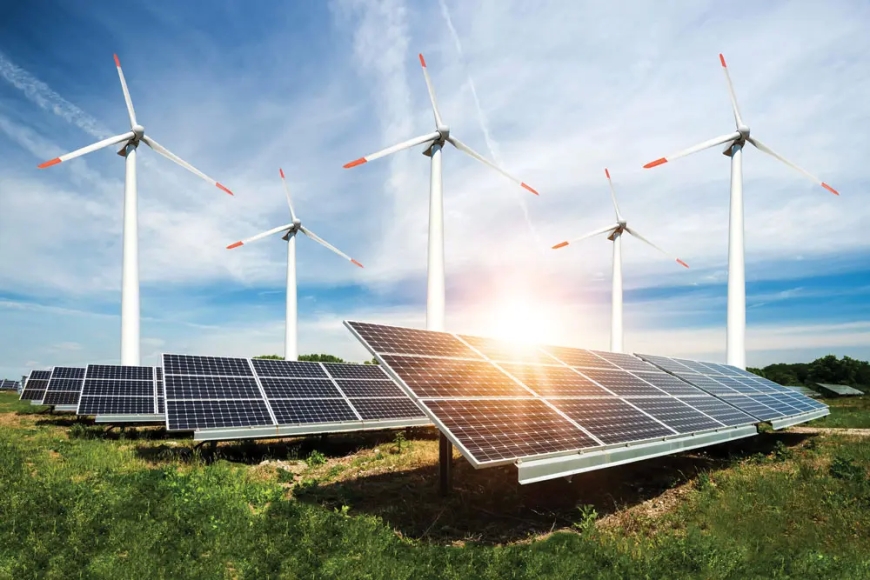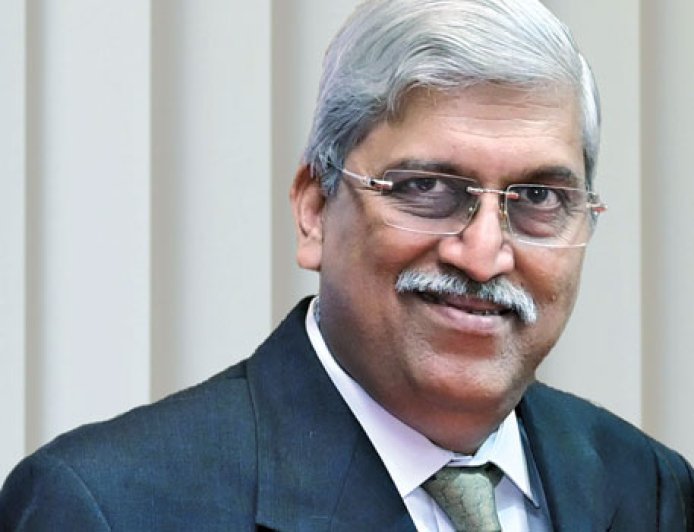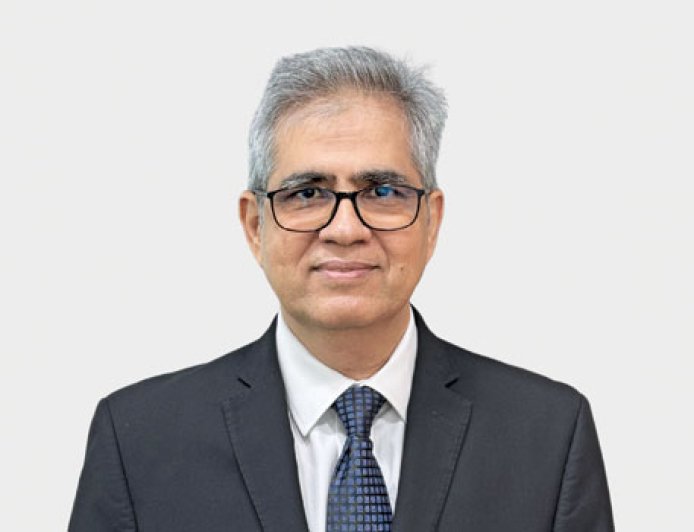CLEAN ENERGY Goals and the Way Forward

Renewable energy has abundant opportunities given the way projects and sustainability initiatives are progressing in the country. However, will these be enough to achieve the goals and sustain the growth in the long run? Construction Times explores the trend and outlook.
India has set the goal to be carbon neutral by 2070. Meanwhile, the country will require investments of around USD 200 billion to establish RE generating assets by 2030, according to a Nomura report. In FY24, as per the report the country auctioned 40 GW of RE capacity. However, to meet the country's ambitious goal of 500 GW of renewable energy capacity by 2030, the pace of RE auctions will need to increase significantly, with approximately 60 GW of capacity needing to be auctioned each year.
Prevailing RE trends
 |
Girishkumar Kadam Senior Vice President & Group Head - Corporate Ratings, ICRA. |
The RE capacity, including the large hydro capacity, required to meet the renewable purchase obligation (RPO) trajectory approved by the Government of India of 43.33% by FY2030 is estimated to be over 440 GW considering the annual demand growth of 6.0% till 2030. Given the installed RE and large hydro capacity of 201 GW as of September 2024, the incremental RE capacity requirement over the next 5.5 years is large at over 240 GW, translating into an annual capacity addition of ~44 GW.
Solar shines
The solar power segment remained the key driver of capacity addition in the RE sector, with significant capacity additions over the past 10 years, which in turn increased its share in the overall RE mix to 58.7% as of September 2024 from 8.3% as of March 2014.
 |
Vimal Kejriwal Managing Director & CEO, KEC International Limited |
Additionally, integrating solar with Battery Energy Storage Systems (BESS) is a game-changer. It enhances energy management and provides grid stability, making it the need of hour. Market is looking at 2-6 hours battery storages now which will move to 12 hours soon. Floating solar installations are also gaining popularity and we are studying the market.”
“The solar energy industry has already seen a chain of revolutionary trends. Perhaps the most significant change to the business arises with PV technology thanks to perovskite solar cells and tandem cells, looking promising enough to come up with higher energy conversion rates at lower costs. Bifacial solar panels also started to gain their prominence with the possibility to absorb sun rays both from the front and backside,” says Ankit Singhania, Director - Sales & Procurement, Navitas Solar.
Open access policies allow industries to purchase solar power directly, promoting renewable energy adoption. From supply standpoint, the Production-Linked Incentive (PLI) scheme promotes domestic manufacturing of high-efficiency solar modules with a significant outlay. The PM Kusum scheme encourages decentralized solar installations to reduce farmers' dependence on diesel. India is also focusing on developing solar parks and Ultra Mega Solar Power Plants to streamline land acquisition and regulatory approvals. Additionally, the imposition of Basic Customs Duty (BCD) on solar imports aims to bolster domestic production, while waivers on transmission charges encourage the establishment of renewable energy projects. “Overall, while there are significant opportunities in the solar sector, the effective implementation of supportive policies is crucial for its sustained growth and viability,” observes Kejriwal.
In spite of the brighter prospects of solar sector, there are challenges abound. Kejriwal elaborates, “Firstly, solar modules are a significant cost driver, accounting for about 60% of the total project cost. While we’ve seen a decline in module prices recently, they remain volatile due to global supply and demand imbalances. India is still a module assembler, and we are dependent on the PV cells and wafers. This uncertainty poses challenges for long-term project planning and profitability.”
 |
Ankit Singhania Director - Sales & Procurement, Navitas Solar. |
In addition to module costs, commodity prices—such as copper, aluminium, and steel—affect approximately 15-20% of the total project expenses. Another pressing issue is labour. The solar sector’s rapid expansion has created a strong demand for skilled labour, making recruitment and retention increasingly challenging.
Wind sets to regain momentum
Wind power capacity according to the government figures is 47.36 GW, driven by the vast potential of the coastal and inland wind corridors across the country. However, the share of the wind segment declined to 30.6% from 66.7% during the last 10 years as the capacity addition slowed down, following the shift from a feed-in tariff regime to a bidding regime.
According to the Global Wind Energy Council (GWEC) Global Wind Report 2024, India currently ranks fourth globally in total wind installations as of January 2024 and the second-largest wind market in the Asia-Pacific region, following China. GWEC projects a capacity addition of 22.8 GW of onshore wind capacity between 2024 and 2028.
Green hydrogen
Green hydrogen is an important piece of the carbon neutrality jigsaw. It can help in decarbonizing applications such as shipping fuel, DRI steel, heavy transportation and others. “The Central Government has set a goal of production of 5 MMTPA under the India Green Hydrogen Mission. Producing this hydrogen will itself require about 125 GW of RE. Thus, even as India explores multiple avenues of decarbonization, RE will remain at the core of most efforts,” says Naveen Munjal, Director - Business Development and Commercial, Apraava Energy. Green hydrogen, too, is likely to give a big boost to the power sector and contribute to carbon neutrality.
 |
Naveen Munjal Director - Business Development and Commercial, Apraava Energy. |
RE outlook
The outlook for the renewable energy sector remains stable led by strong policy support from the Government of India, healthy demand growth, superior tariff competitiveness and sustainability initiatives by large commercial and industrial (C&I) customers.
In spite of the growth trend in RE sector, capacity addition remains short of the required addition and should significantly increase to meet the RPO targets by 2030. According to Kadam, the capacity addition is constrained by challenges in securing land, delays in augmenting transmission infrastructure and supply chain challenges for RE equipment. Resolving these challenges remains key to augmenting the RE capacity addition.
Kejriwal points out, “The future of solar energy and renewables is undeniably bright, but I believe it’s essential to recognize the complexities involved. As an EPC player, we need to approach the market with careful analysis and caution. On the positive side, we have ambitious installation targets for solar modules and supportive government policies that are driving growth.”
Munjal is of the view, “There is enough global capital looking to tap the huge opportunity that India presents. The key to realizing this potential lies in establishing the required transmission infrastructure and addressing the challenges around land acquisition & Rights of Ways.”
Overall, there are significant opportunities in the RE sector the way future trends are turning out. However, supportive policies and a conducive execution environment will be crucial for the sustained growth & viability of the sector.







